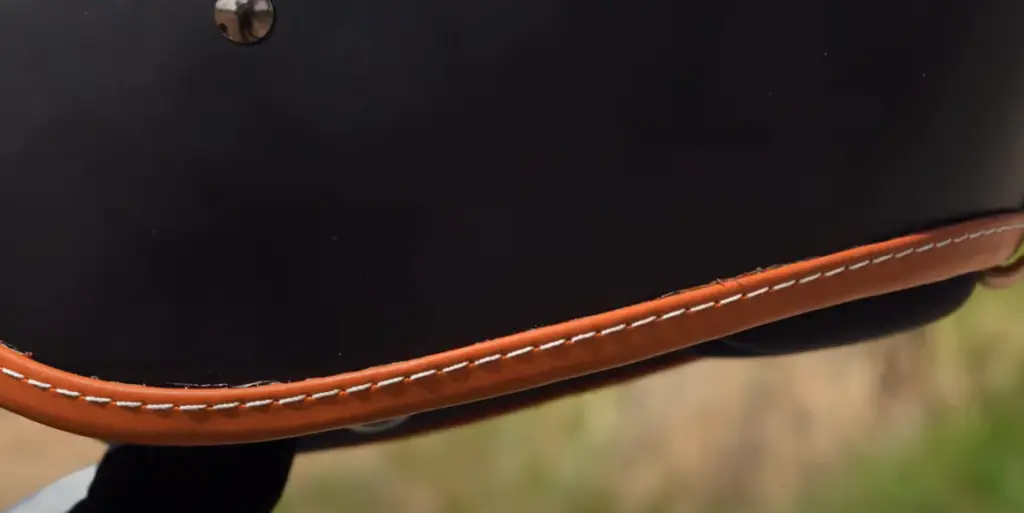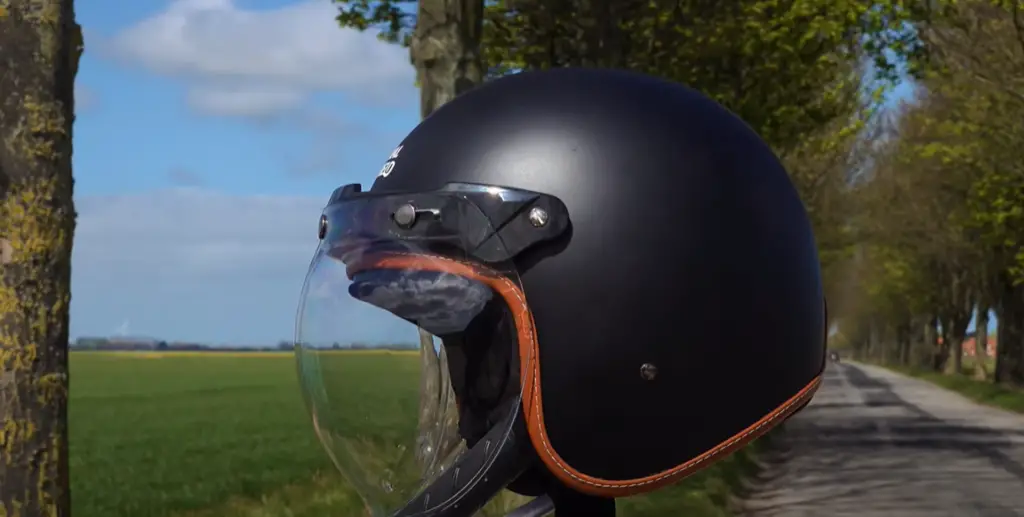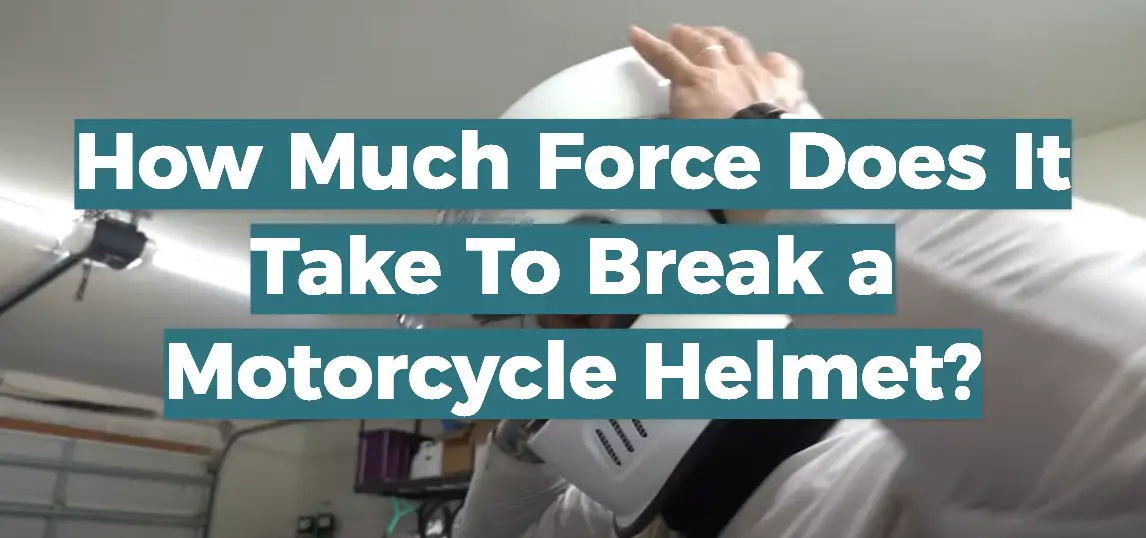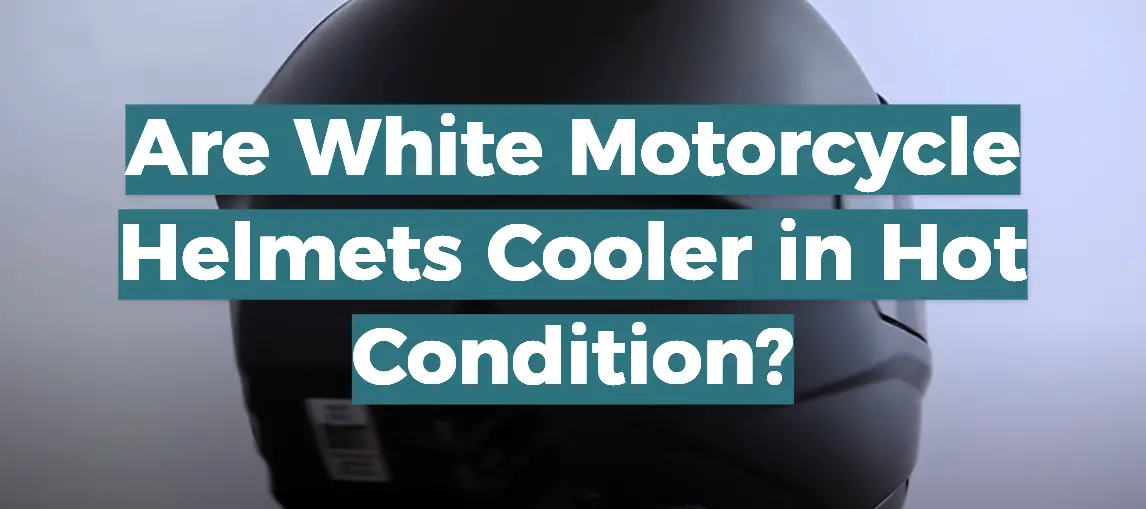Are half helmets safe? When it comes to motorcycling, one of the most important questions is whether a half helmet offers enough protection or if riders should be wearing something more. With the increasing popularity of half helmets and other minimalistic headgear, it’s more important than ever that riders are aware of how much protection they’re getting from their chosen helmet option. This blog post will explore the importance of finding just the right helmet for your needs and look at whether a half-helmet really does offer adequate safety on the roads.
Table of Contents
Anatomy of Half Helmets
Half helmets are popular among riders looking for a lightweight, stylish, and comfortable option that offers more coverage than an open-face motorcycle helmet. Half helmets provide added protection over open-face designs, as they cover the entire back of the head, ears, and temples. They usually don’t have visors or face shields either, which makes them great for those who don’t need extra protection from wind and rain.
Half helmets come in various styles with different types of liners, chin straps, vents, and other features. The most common type of half-helmet is made up of three parts: the outer shell, liner, and chin strap. The outer shell can be made from fiberglass or thermoplastic material and is designed to be strong and lightweight. It is also coated with a protective finish that helps protect against scratches, fading, and other wear and tear.
Finally, it’s important to make sure your half helmet fits properly before you ride. Half helmets should fit snugly around the head while still allowing enough room for you to comfortably fit your ears inside. Be sure to measure your head accurately and check the manufacturer’s sizing chart to find the best fit for you [1].

What are the advantages and disadvantages of half helmets?
Advantages of Half Helmets:
- They provide more ventilation and airflow than full helmets, making them far more comfortable to wear during hot summer days.
- They are lightweight, making them easy to carry around for long rides.
- They have a much lower profile than full-face helmets, which can be a plus if you want something that looks less bulky and intimidating.
Disadvantages of Half Helmets:
- Since they cover less of your head, they offer little protection in the event of an accident or crash. If a half-helmet is involved in an incident, your head will likely suffer a lot more impact than it would with a full-face helmet.
- They can be quite noisy, as half helmets offer little to no noise reduction when compared to full-face models.
- Most don’t come with any sort of visor or eye protection, which means you have to rely on sunglasses or a separate shield for eye protection.
- Lastly, they often look less stylish than full-face helmets, so if you want the edgy and intimidating look that comes with wearing a motorcycle helmet, then a full-face model is usually the way to go [2].
What to consider when choosing the best half helmet?
DOT/ECE certifications
When choosing a half helmet, it is important to make sure that the helmet has been certified by either the US Department of Transportation (DOT) or the Economic Commission for Europe (ECE). This certification ensures that the helmet meets safety standards and provides adequate protection in case of an accident.
Size Fit
The size and fit of your helmet are of utmost importance to ensure maximum comfort and protection. Make sure to measure your head circumference with a flexible tape measure, starting at roughly one inch above your eyebrows and wrapping around your head just above your ears. Then, use this measurement to choose a helmet that fits properly. Finally, be sure to adjust all straps and pads as needed for optimum fit.

Ventilation and Air Flow
Having adequate ventilation is important to prevent overheating in warmer weather. Look for a half helmet that includes multiple vents, allowing air to flow freely through the interior of the helmet.
Noise Reduction
Some helmets may also feature noise-reduction technology such as ear covers or soundproofing materials. These features can help reduce wind noise, making for a more comfortable riding experience.
Visor/Shield
Consider whether you would like your half helmet to have a visor or shield attached. Visors and shields offer additional protection from debris and harsh sunlight while riding. Make sure to choose one with anti-fog properties if necessary.
Comfort
Comfort is key. Make sure to try on any helmet before buying it to ensure that it fits comfortably and securely. Additionally, look for helmets with removable liners and cushioned straps for extra comfort.
Head shape
Consider your head shape and pick a helmet that is designed to fit your specific size and shape. Round-shaped helmets are usually best for those with round heads, while helmets suited to oval-shaped heads are available for those with longer faces.
Shell material
The shell material of your helmet is also important. Helmets can be made from either thermoplastic or composite materials, both of which offer excellent protection. Thermoplastic shells tend to be more lightweight and less expensive than composite shells, while composite shells provide greater strength while adding a bit more weight.
Interior liner
The interior liner of the helmet also needs to be taken into consideration. Look for a liner made from breathable and moisture-wicking materials that will keep you cool and comfortable. Additionally, adjustable cheek pads make it easier to customize the fit of your helmet.
Price
Finally, consider your budget when choosing a helmet. Helmets range in price depending on features such as shell material, noise reduction technology, and visor/shield designs, so make sure to compare prices before making a purchase [3].

Differences Between Full-Face and Half-Helmet Safety
Full-face helmets provide the highest level of protection, covering the entire head, face, and jaw. They include a chin bar that extends down to protect the front of your face along with an enclosed rear section for added security. Full-face helmets come in various styles including full-coverage, modular and open-face designs. Due to their extensive coverage, these types of helmets can be bulky and heavy compared to other helmet types.
When choosing a helmet, it is important to consider the type of riding you plan on doing and the level of protection. Full-face helmets provide more coverage but may be too bulky or hot for certain activities or climates. Half-helmets offer less coverage but can be more comfortable in warm weather or when engaging in low-speed activities such as cruiser biking. Ultimately, the type of helmet you choose should depend on your individual needs and preferences [4].
What are other safe helmets?
Other helmets that meet safety standards and offer a high level of protection include:
Bell Helmets: These are designed for style, comfort, performance, and safety. They feature an array of secure fit systems that provide superior levels of stability. The helmets also come with various features such as bug nets, removable liners to keep your head cool, and adjustable visors to protect against the sun.
Giro Helmets: Giro is a trusted brand when it comes to bike helmets. Their range provides both lightweight comfort and advanced protection for cyclists. Features include MIPS technology for extra impact protection, adjustable ventilation ports for breathability, and integrated fly netting to protect against bugs.
Smith Optics Helmets: Smith Optics are known for their stylish designs and advanced technology. Their helmets feature adjustable fit systems, air-flow vents to keep your head cool, and shatter-resistant visors to protect from the sun. They also come with a range of personalization options such as custom graphics and logos.

FAQ
Are half-face helmets safe?
Yes, half-face helmets are safe when worn correctly. They provide protection for the head and face from impacts, as well as protect against wind and weather conditions. It is important to note that they may not provide the same level of protection as full-face helmets, so it is wise to consider all factors before choosing a helmet style. Additionally, it is always recommended to wear a properly fitting helmet that meets safety standards to ensure your safety while riding.
How often should I replace my helmet?
It is recommended that you replace your helmet every 3-5 years depending on use and whether or not any damage has occurred. Signs of damage can include cracks, dents, or other visible signs of deterioration. If there are any signs of damage, it is important to replace your helmet right away. Additionally, it is recommended that you inspect your helmet before each ride to ensure it is in good condition and fits properly.
What should I look for when buying a motorcycle helmet?
When purchasing a motorcycle helmet, there are several key features to consider. First, make sure the helmet meets all safety standards and has been approved by either the Department of Transportation (DOT) or the Snell Memorial Foundation (Snell). Additionally, look for helmets with ventilation systems and removable liners for comfort and convenience. You also want to make sure that the fit is snug but not overly tight as this can cause discomfort over long rides. Lastly, think about what type of rider you are and choose a helmet accordingly. This will ensure that the helmet has all the features you need to have a safe and enjoyable ride.
Is a half or full helmet better?
The type of helmet you choose ultimately depends on your riding style and personal preference. Half helmets provide less coverage than full-face helmets; however, they are typically lighter, more comfortable to wear for long rides and provide some protection from the elements. Full-face helmets provide greater overall protection but can be heavier and hotter in hot weather conditions. Consider all factors before choosing a helmet that best meets your needs.

Can I use my motorcycle helmet while riding off-road?
It is not recommended to use a motorcycle helmet while riding off-road as these types of helmets do not have the same level of protection or features as an off-road specific helmet. Off-road helmets are designed with additional safety features such as reinforced chin bars, more secure visors, and extra padding for improved protection. It is important to always wear the correct protective gear for whatever type of riding you are doing.
What safety features should I look for in a helmet?
When choosing a helmet it is important to make sure that it meets all safety standards and has been approved by either the Department of Transportation (DOT) or the Snell Memorial Foundation (Snell). Additionally, look for helmets with ventilation systems, removable liners, adjustable straps, and a snug yet comfortable fit. Finally, consider what type of rider you are before making your purchase; this will ensure that the helmet has all the features you need to have a safe and enjoyable ride.
What are the disadvantages of a half helmet?
The main disadvantage to a half helmet is that it does not provide the same level of protection as a full-face helmet. Half helmets only cover the top and back of the head, leaving the face exposed to potential impacts or debris. Additionally, they may be less comfortable in hot weather due to lack of ventilation and can be more difficult to secure properly. It is important to weigh all factors before deciding on which type of helmet is best for you.
Which is the safer full-face or half-face helmet?
Full-face helmets provide the most overall protection as they cover both the back and front of the head. They also typically have additional safety features such as reinforced chin bars and extra padding for improved protection. Half-face helmets, on the other hand, only cover the top and back of the head, leaving the face exposed to potential impacts or debris. For this reason, full-face helmets are generally considered to be safer than a half-face helmet.
How do you pick the best-fitting helmet?
When selecting a helmet it is important to make sure that the fit is snug but not overly tight. An incorrectly fitting helmet can be uncomfortable and may not provide adequate protection in an accident. Additionally, look for helmets with adjustable straps and removable liners to ensure the most comfortable fit possible. Finally, take into account your riding style; this will help you choose a helmet with all of the features you need for safe and enjoyable rides.
How does a half helmet fit?
Half helmets should fit snugly, with no more than one finger width of space between the temple and forehead. Additionally, the straps should be adjusted so that they are securely fastened under your chin without being overly tight. The helmet should not move or slide when shaking your head, and it should feel comfortable enough to wear for long rides. Finally, make sure to check that all necessary safety features such as ventilation systems and secure visors are present before making a purchase.

Are half-face helmets legal in the UK?
Half-face helmets are legal to wear in the UK, however, they must meet all necessary safety standards to be considered roadworthy. The Department of Transportation (DOT) and Snell Memorial Foundation (Snell) both guide approved helmet models that can be used while riding. Additionally, it is important to make sure that the helmet fits properly and has all the necessary protective features for a safe ride.
Are Bluetooth helmets legal?
Yes, Bluetooth helmets are legal and can be used in the UK. However, it is important to make sure that the helmet meets all necessary safety standards before use. Additionally, these helmets should be used with caution due to possible distractions from phone calls or music playback when riding. It is best to ensure you are paying full attention on the road at all times for your safety.
Can I ride with my helmet flipped up?
No, it is not recommended to ride with your helmet flipped up as this can impair visibility and increase the risk of an accident. It is important to make sure that your helmet fits properly and securely before riding; a secure fit will help ensure that the helmet provides you with maximum protection in case of an accident. Additionally, it is essential to keep your focus on the road at all times for your safety.
What is the 2 finger rule for helmets?
The two-finger rule is a test that is used to measure the fit of your helmet. To do this, put on the helmet and fasten the straps securely. Then use two fingers to check for space between your forehead and the inside of the helmet; if you can comfortably fit two fingers in, then it means that your helmet is too loose. Adjusting the straps until there is only one finger width of space will provide a secure and comfortable fit.
Which helmet is not allowed?
Any helmet that does not meet the necessary safety standards for a particular country is not allowed to be worn. In the UK, helmets must have either DOT or Snell certification to be legal to wear on the road. Additionally, it is important to make sure that your helmet fits securely and has all the necessary features such as ventilation systems and secure visors before riding.
Is it OK to share a helmet?
No, it is not recommended to share helmets as this greatly increases the risk of spreading germs and other illnesses. Additionally, a helmet should fit snugly on an individual’s head; sharing helmets can make it difficult to get a secure fit, which can put riders at risk in case of an accident. It is best to purchase a helmet that fits you properly for the most protection while riding.
Is a helmet good or bad for hair?
A helmet can be good or bad for hair depending on the type of material used. Some helmets may contain materials that can irritate your scalp or cause friction while riding, which can lead to damage such as split ends and breakage. Additionally, some helmets may contain vents that let in wind and dust, which can also cause problems with your hair. It is important to make sure that you are using a helmet with comfortable material and adjustable fittings before riding to ensure maximum protection and minimal damage to your hair.
Can I use my half-face helmet in the rain?
Yes, half-face helmets are designed for all weather conditions including rain. However, it is important to make sure that the helmet has secure visors and vents that can help protect against the elements. Additionally, be sure to avoid riding in heavy downpours as this can increase the risk of an accident or injury.
Useful Video: Best Motorcycle Half Helmets
Conclusion
The safety of half helmets is not a one-size-fits-all answer. Ultimately, the decision to wear a half-helmet or full-face helmet should be based on a rider’s individual preferences and needs. Half helmets offer better visibility and hearing than full-face helmets, but provide less protection in the event of an accident. Therefore, every rider needs to make an informed choice about what type of helmet best suits their riding style and situation. Whether you choose to go with a half-helmet or full-face helmet, always remember that your safety should be your top priority!
References:
- https://www.motorcyclelegalfoundation.com/types-of-motorcycle-helmets/
- https://timebusinessnews.com/half-helmet-features-benefits-drawbacks/
- https://zerodeathsmd.gov/news/choosing-the-best-motorcycle-helmet/
- https://americanlegendrider.com/a/blog/half-or-full-face-helmet-when-to-choose-one-over-the-other






Leave a Reply